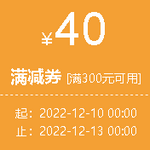光华讲坛——社会名流与企业家论坛第3069期
主题:Measuring China’s Trade Liberalization: A Generalized Measure of Trade Restrictiveness Index
主讲人:上海财经大学国际工商管理学院陈波
主持人:西南财经大学国际商学院陈丽丽副教授
时间:2013年10月18日(星期五) 下午 14:00-16:00
地点:柳林校区通博楼D407会议室
主办单位:国际商学院科研处
主讲人简介:
陈波,2008年11月毕业于加拿大Simon Fraser University,获经济学博士学位,主要研究方向为国际贸易学、区域经济整合、中国经济。2009年加入上海财经大学,现任该校国际工商管理学院世界经济与贸易系副系主任和自由贸易区研究中心副主任、博士生导师。2010年获上海市“浦江人才”称号。陈老师2009年参加工作以来共发表国际高水平SSCI英文文章5篇,国内顶级经济期刊《经济研究》、《管理世界》论文各一篇。目前陈老师正主持国家自然科学基金等国家与省部级课题3项,国际课题1项。
除上海财经大学以外,陈老师还兼任加拿大亚太基金会(APFC)研究员、美联储达拉斯分行(Fed Dallas)客座研究员、亚太经济合作组织(PECC)研究顾问等职。
内容提要:
Both simple average and import-weighted average tariff indexes may be misleading measures of tariff barriers. In this paper, we propose a generalized trade restrictiveness index (GTRI) that extends Feenstra’s (1995) tariff restrictiveness index (TRI) by relaxing his crucial assumption of a small open economy. We show that GTRI can be measured using import tariffs, import shares, and the corresponding import and foreign export elasticities. We apply the GTRI to measure China’s trade liberalization during and after China’s accession into the World Trade Organization (WTO) in 2001, using highly disaggregate Chinese import and tariff data from 1997 to 2008. As shown by the GTRI, prior to its WTO accession China’s average tariff barrier actually increased by nearly 50% compared to the 1997 rates, which is in sharp contrast to the 13% increase captured by the conventional weighted average tariff. Our GTRI therefore indicates that before 2001, China’s imports were negatively correlated with its tariffs and the tariff reduction may not take place on those products with relatively lower (foreign) export supply elasticities. In other words, China may strategically keep or even increase its tariffs on the imports that it has manipulation power so as to maintain its bargaining power in the negotiation of WTO membership. Nevertheless all the barrier measures dropped significantly after 2001 and exhibits similar dynamic pattern, confirming WTO’s effectiveness in removing tariff barriers.
